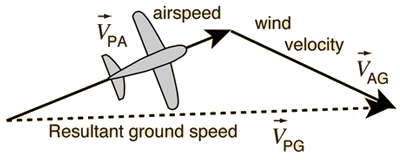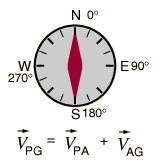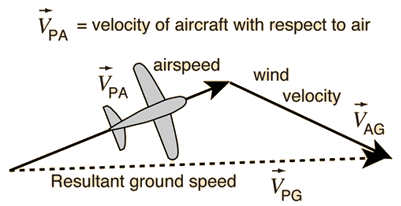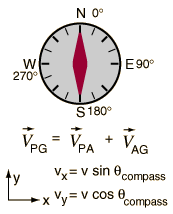Airplane in Wind
The cross-country navigation of an aircraft involves the vector addition of relative velocities since the resultant ground speed is the vector sum of the airspeed and the wind velocity. Using the air as the intermediate reference frame, ground speed can be expressed as:
 The velocity of the plane with respect to the ground is equal to the velocity of the plane with respect to the air plus the velocity of the air with respect to the ground. |  |
Calculation
Relative velocity
| HyperPhysics***** Mechanics | R Nave |


